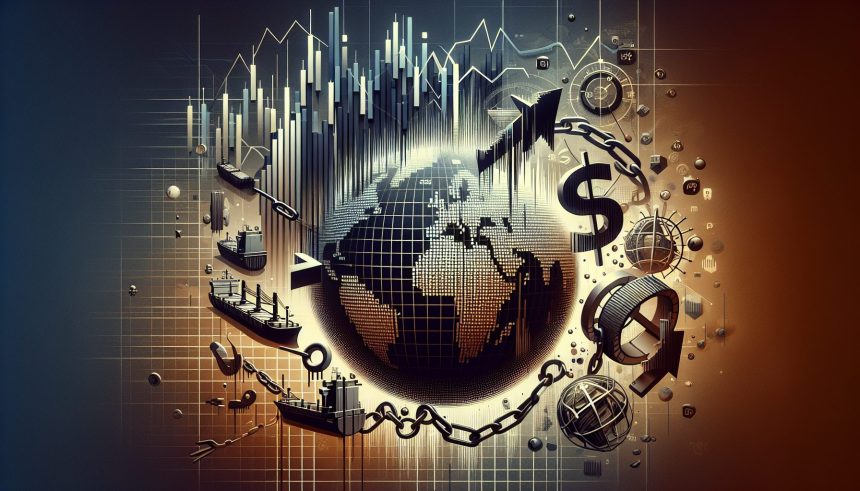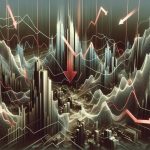President Donald Trump’s tariffs have sent shockwaves through the stock market, pushing it to the brink of bear territory faster than any president in modern history. The S&P 500 has lost 15% of its value since Inauguration Day, with two-thirds of that fall occurring after Trump’s “Liberation Day” event, where he promised to increase tariffs at an unprecedented pace. The severity of the past two days of trading has only been matched by the crashes in 1987, the 2008 financial crisis, and the Covid crash of 2020.
While previous downturns were influenced by existing weaknesses, Trump took office amid a bull market. The S&P 500 gained 23% in 2024, but it is now clear that Trump’s policies, particularly his aggressive tariffs, have played a significant role in the market’s reversal. The broader economy could also face significant challenges.
More than three-in-five Americans are involved in the stock market in some capacity, so a market downturn impacts Main Street directly. David Kotok, co-founder of Cumberland Advisors, compared the Trump tariffs to the 1973-1974 oil price shock, warning that they act as a massive supply shock that could lead to higher inflation coupled with slow growth or recession. JPMorgan raised the chance of a recession to 60%, from a previous 40%.
Goldman Sachs has raised its recession probability from 20% to 45%, while HSBC places it at 40%. If real GDP falls for two consecutive quarters, a recession will likely be declared. The last instance of consecutive negative quarters in a first presidential year without a pre-existing recession was in 1953, as the US emerged from the Korean War.
In this case, any potential recession would be attributed to the trade war initiated by Trump. Amid the economic upheaval, Wikipedia’s volunteer editors have been diligently chronicling the turbulence. The main Wikipedia entry is titled “2025 stock market crash,” but there is an ongoing debate about whether the title should be changed to “2025 stock market decline.” The back-and-forth reveals some cracks beneath the surface, with editors having starkly different views of what Wikipedia is and how it best serves readers.
Tariff threats shake market stability
On one side are the archivists, who believe that Wikipedia should only include entries that have long-term historical significance. On the other side are the updaters, who believe the site’s articles should reflect the current media and public framing of significant events.
Most Wikipedians in the updater camp prefer the word crash, while the archivists lean toward calling it a decline until there’s a broader historical consensus. This debate underscores Wikipedia’s challenge of documenting history in real time, balancing the site’s role as both a current events tracker and a long-term archival resource. Considering Wikipedia’s role in writing the “first draft of history,” one might assume there’d be a larger crowd involved in the debate.
However, at press time, there are only about 40 editors involved. On April 9, Trump announced a ninety-day pause on the tariff policies enacted just a week prior, after billionaires, CEOs, and financial markets delivered a resounding message: these tariffs threaten profits, and that’s unacceptable. Investment firms holding trillions in multinational corporate stocks watched their portfolios hemorrhage value overnight, with more than $270 billion vanishing from the net worths of the world’s billionaires in a single day.
CEOs and billionaires, including some of Trump’s most prominent supporters and advisors, lobbied against the tariffs, warning that they would slow down growth and plunge America into a recession. Behind the public pronouncements were a flurry of communications to the White House, all delivering the same message: back down, or else. By Wednesday, Trump did just that, announcing a ninety-day pause on reciprocal tariffs for most countries.
Trump, the billionaire president with a cabinet full of fellow oligarchs, received a crash course in who really holds the levers of power: the capitalist class he emerged from. In his essay “The Market as Prison,” Charles E. Lindblom describes capitalism as a system rigged with an “automatic punishing recoil” where any credible challenge to capitalist profits automatically triggers a cascade of disinvestment that can wreck the economy.
Trump’s tariffs, by disrupting established global supply chains, raising input costs, and risking retaliatory measures from trading partners, threatened the bottom line. Despite all his bluster and his own billions in wealth, Trump found himself in the position that left-leaning governments throughout history have found themselves in: forced to cave to the whims of the market.







